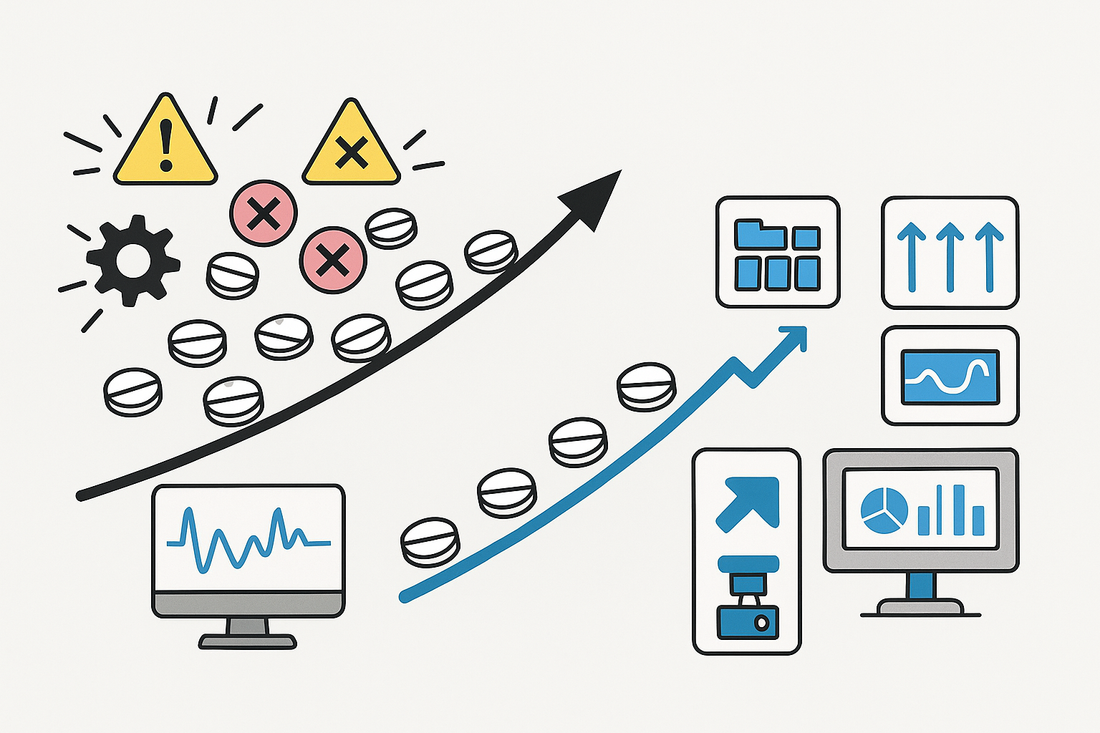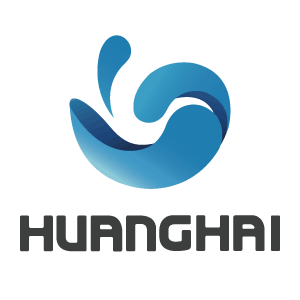
From Start-Up to Stable Output: On-Site Lessons from Two Pharma Plants
Share
Introduction: After equipment lands on the shop floor, most teams go through “ramp-up → stabilize → optimize.” The common goal: reach stable, compliant throughput with minimal trial cost. The checklist below summarizes practices adopted by two Shanghai pharmaceutical manufacturers (covering both continuous re-orders and new-line deployments).
Pain points observed on site
- Unstable early curves: Formulation, film layer, and hole-diameter windows have not been verified on large samples.
- Tension between takt and yield: As speed increases, false/missed detections rise and rejection rate climbs.
- Changeover & SOP gaps: Multi-shift handovers introduce errors; parameter sets and cleaning steps are inconsistent.
- Maintenance rhythm: Optics/dust/drive components lack routine checks, causing “random” downtime.
HUANGHAI’s ramp-up checklist (field-proven)
- Parameter & recipe library: Build a structured library by tablet type / hole size / single- vs dual-hole. Map target release curve ↔ process window ↔ equipment parameters.
-
Three-step takt optimization:
- Baseline speed: Achieve stable inspection at conservative speed.
- Step-up trials: Raise speed gradually while re-validating vision thresholds and exposure/lighting.
- Target speed: Tune reject-gate timing and window alignment at the final takt.
- Yield & re-inspection: For frequent nonconformities (e.g., undersized diameter or position offset), configure targeted re-inspection. Adjust lighting/lens/thresholds where needed.
- SOP & training: Convert changeover, tool/focus alignment, cleaning, and confirmations into timed checklists with responsible owners. Use signed handover checks for new/legacy shifts.
- Maintenance cadence: Weekly/monthly/quarterly plans for optics cleaning, negative-pressure/filtration checks, lubrication and calibration. Keep a minimal critical-spares kit.
- Data dashboard: Show per-shift KPIs—hole presence rate, diameter dispersion, rejection rate, and Top-5 alarms—to drive continuous improvement.
See HUANGHAI’s complete solution overview here: Laser-Drilling Solution for Osmotic Tablets. For equipment details, refer to the Olando K3-2 Pharmaceutical Laser Drilling System.
Summary
Stable output comes from four pillars: a parameter library, takt synchronization, executable SOPs, and a closed-loop data board. Plan these upfront and the ramp-up period shortens significantly. HUANGHAI can collaborate on parameter locking, takt calibration, dashboard metrics, and maintenance rhythm to accelerate time-to-stability.
